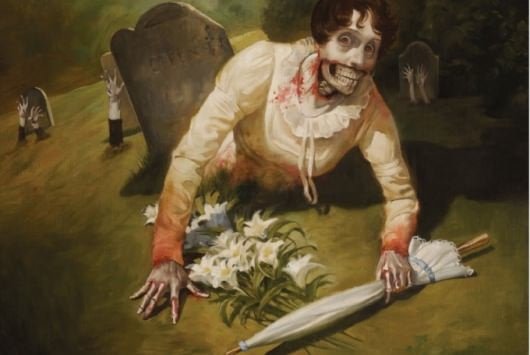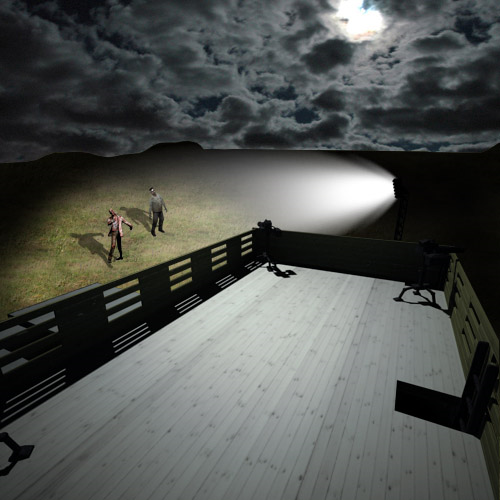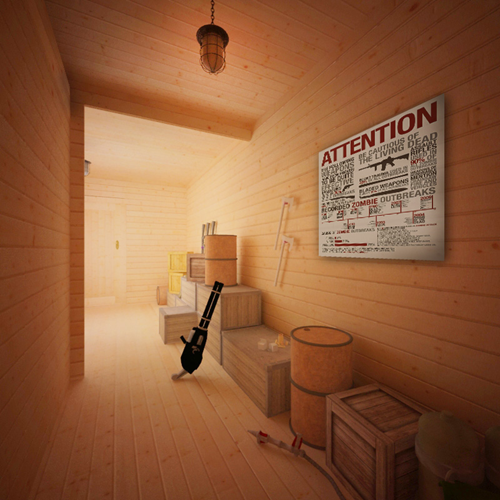Dr. Robert Smith? – and yes, the question mark is part of his legal name – knows what will happen if a zombie outbreak takes place; he’s already calculated the events via mathematical modeling, and his work has spread like a virus around the world. Smith? has even entered the ranks of the Guinness World Records (together with the co-authors of his original paper on a zombie apocalypse) for “First Mathematical Model for Surviving a Zombie Attack.”
ZRS: How did you find yourself becoming a guru of apocalyptic prediction?
Dr. Robert Smith?: In my day job, I’m a researcher who uses mathematics to understand how infectious diseases work. This involves understanding not just the science and the mathematics but the social science, the ethics, the politics, and the way media works. I like to take a very holistic view of disease, because I think all these things matter and it’s not helpful to consider them in isolation. I’m also a non-fiction writer in my spare time. I have books on math, Doctor Who, and yes, zombies. I’d always kept my pop-culture interests entirely separate from my academic research until one day when I touched them together and the whole world went mad.
Were you already a zombie fan?
I’ve always been a fan of science fiction and the like, so I’d seen a few zombie movies here and there, but they were more a background thing for me. Then I watched Shaun of the Dead and absolutely loved it. Being a comedy, it has all the zombie tropes in it, so although we watched a lot of movies and played video games when researching the zombie paper, we kept referring back to it whenever we needed a shorthand example. It’s just so expertly constructed.
So what was the inspiration for bringing those two worlds together?
I was teaching a class on mathematical modeling of infectious diseases, and I set the students a project to create a model of any disease they liked. Various people did malaria or HIV, but one group decided to do zombies. They thought I’d shoot the idea down, but being a sci-fi fan, I loved it! It was an excellent educational tool and got the class quite excited when the students presented it. Pretty much on a whim, I decided to submit it for publication, for no other reason than I thought it would be a funny line on my CV; I thought it would amuse me and no one else.
What was the initial academic reaction to the paper?
The journal that accepted it sent me a very nice note saying “Our panel of experts has found that the mathematics is correct, the model accurate… and by the way, we believe this is the first ever mathematical model of zombies!”
What happened next when the world discovered you had just modeled a possible zombie apocalypse?
The media first cottoned on to it when they saw a listing of the table of contents, which went “HIV model, malaria model, TB model, zombies…” One of these things was not like the others; I guess it made an easy hook for the story. Once the story broke, there was a second hook, which is that I had a question mark in my name. It was at about that point that the world went mad. Okay, it was a slow news week that week, but I was fielding calls from TV stations, doing radio and print interviews nonstop, and basically being in constant demand. Happily, it was summer break so I had time for all this and that helped as well. I actually had to get a crash course in media training, which helped enormously. I was very worried the angle of the story was going to be “scientists do stupid research” so I worked hard to make sure they had a better angle. It turns out you can shift the media narrative if you know what you’re doing.
Why do you think this entire zombie genre has become so mainstream and, as a result, such a great vehicle for education?
I think pop culture has an extremely wide reach, but not always a very deep one; academia is the exact opposite. Combining the two hits that perfect sweet spot. You can tap into the kind of thing everyone knows about – e.g. my parents have never seen a zombie movie in their lives but they know what zombies are by osmosis – and then have the substance behind it to demonstrate how education can be useful. One of the great things that happened was that people simply weren’t aware there was such a thing as disease modeling, so the zombie paper opened their eyes to it. I later heard of kids who decided to become disease scientists as a direct result of it, which I think is just amazing.
How did your appearance on the Morgan Freeman series Through the Wormhole (The Science Channel) come about?
The producers contacted me because they were interested in unusual takes on science education. I told them about an experiment that had been done in my class where you fill beakers with water and secretly add something to two of them that isn’t visible. Then you all “share” beakers but exchange some fluid with partners that simulates exchanging bodily fluid in sexual encounters. Afterwards you can add stuff to the beakers and those that have been infected will change color, so it’s a great illustration of how transmissible an STD can be. They also liked my zombie stuff obviously, so they decided combining the two would be fun. More importantly, it would make a great visual for TV.
Any stories from the set, such as the proper method of wielding a cricket bat (your idea?) against malevolent beakers?
The cricket bat was their idea, but they did let me take it home afterwards, which was nice; it still has some shards of glass in it. The extras were all my students, who had a fabulous time playing zombies and being “infected.” By chance, the next day was teaching evaluations, so as a result I ended up with a special commendation for excellence in teaching from my department. I didn’t have the heart to tell them that it was all thanks to Morgan Freeman.
Which is more frightening to you: A possible zombie outbreak, or the spread of Bieber fever [NOTE: Smith? has also modeled this phenomenon]?
Ha! The spread of Bieber fever is so interesting to me, because it’s a sort of “positive disease:” an infection where individuals actually seek out the infection and want to transmit it to others. So it has some similarities to zombies and some differences, but at the end of the day I think it’s pretty obvious that one is much scarier than the other. I mean, your brain turns to mush, you become indistinguishable from anyone else, and there’s a lot of screaming…oh, and zombies are quite scary and all.
Is there something about mathematical modeling of disease that you think the layman should know and understand?
I think the key thing for the layperson to realize is just how powerful mathematics can be. Given the right input, you can model anything. It’s actually the most reliable way we have of seeing the future, which means mathematics is often at the forefront of any disease outbreak (as it was for swine flu, for example). It’s an absolutely crucial tool in determining things like how many vaccines to stockpile, when and if schools should be closed, that kind of thing. It’s being used all the time to model and predict behavior, not just in disease, but everywhere.
Finally, the question mark is a legal part of your name, correct? Why did you decide to do that?
I added it to distinguish myself from all the other Robert Smiths out there, including – as I later discovered – researchers who were right in my field. I kept getting emails asking about a paper written in 1952 long before I was born. After the zombie paper, I don’t get those emails any more.
If you’d like to read the actual paper, HERE IT IS: Zombies
DR. ARNOLD T. BLUMBERG is the “Doctor of the Dead” – a publisher (www.atbpublishing.com), author, book designer, educator, pop culture historian, and internationally recognized zombie expert. He co-authored Zombiemania (2006), one of the first exhaustive guides to zombie cinema (a revised, expanded edition is on the way); his University of Baltimore course “Zombies in Popular Media” has garnered worldwide press coverage since its launch in 2010; he has contributed chapters to Triumph of the Walking Dead, Braaaiiinnnsss!: From Academics to Zombies, and The Undead and Theology (which was nominated for a Stoker award); his lecture “Zombies: Monsters with Meaning” has been presented at symposia and conventions; he appears in the EPiX documentary Doc of the Dead as well as on TV, radio, and online; and he has two ongoing podcasts – Doctor of the Dead (www.doctorofthedead.com) and The G2V Podcast: The Pop Culture Audio Magazine(www.g2vpodcast.com). Find him on Twitter @DoctoroftheDead. And don’t even get started on his work in Doctor Who, including a book he published called Outside In, edited by…Dr. Robert Smith?!
~zrs.com






























